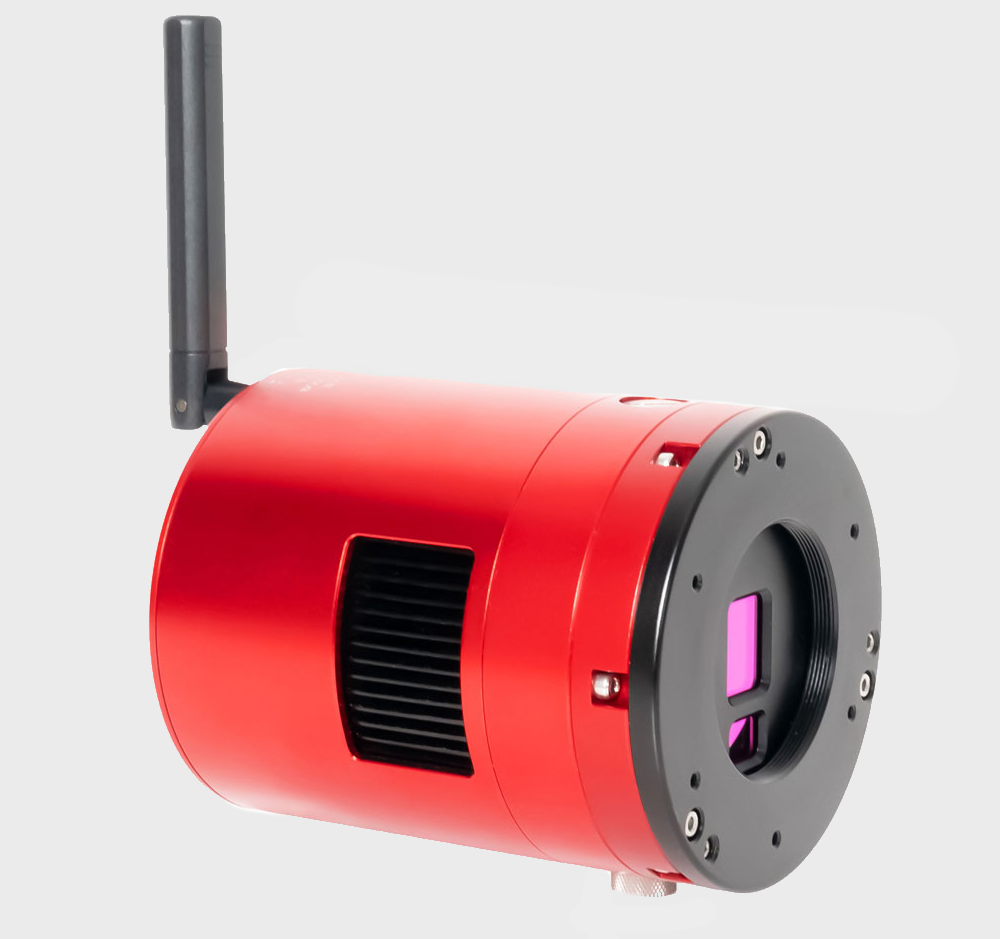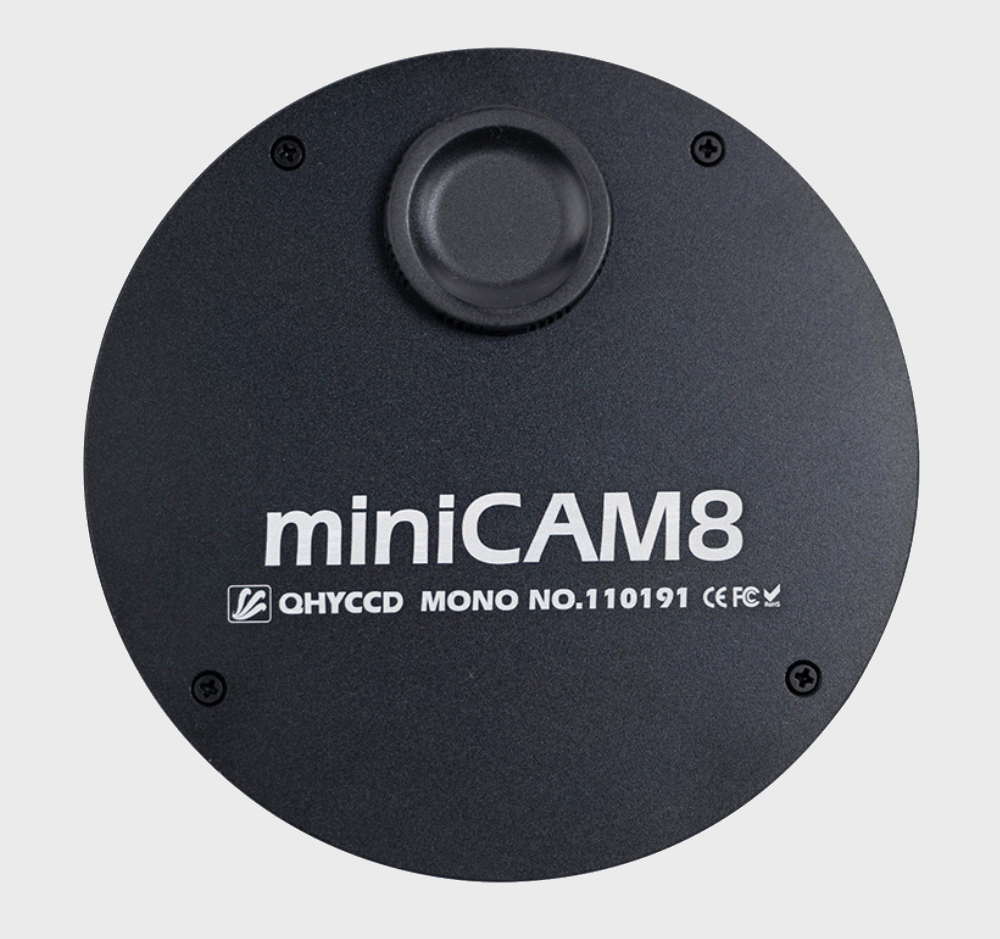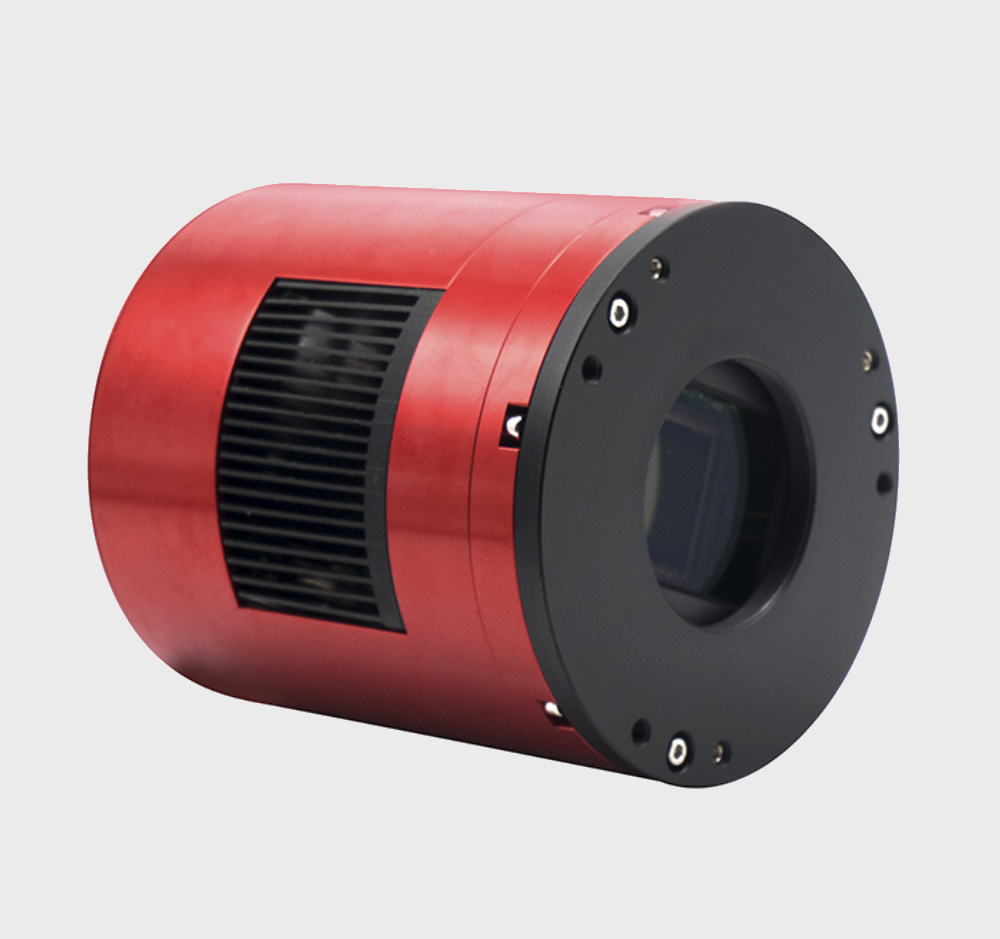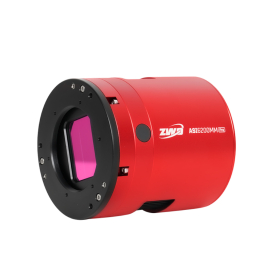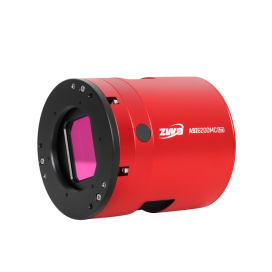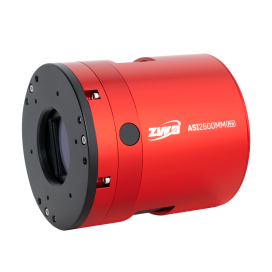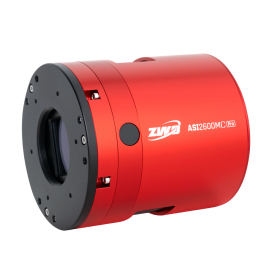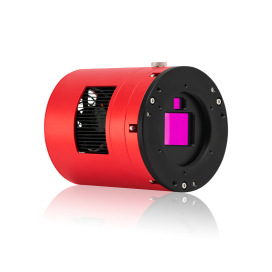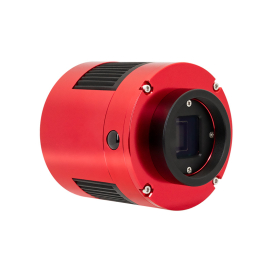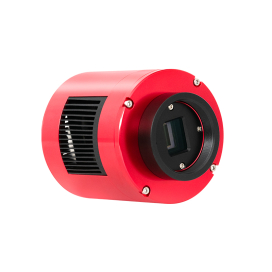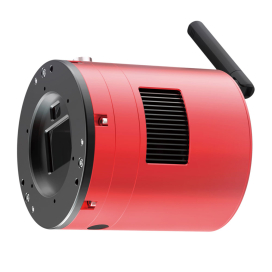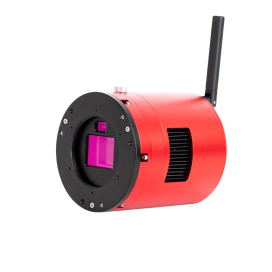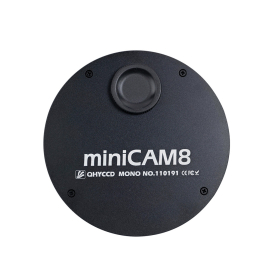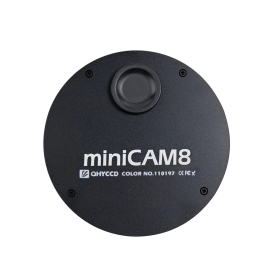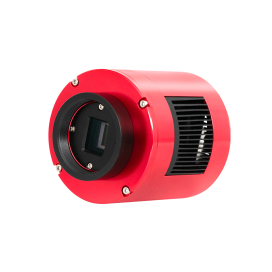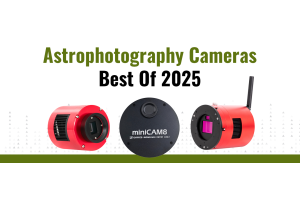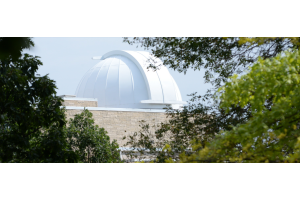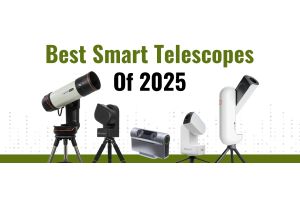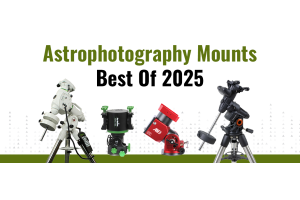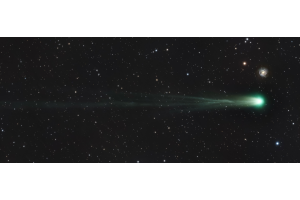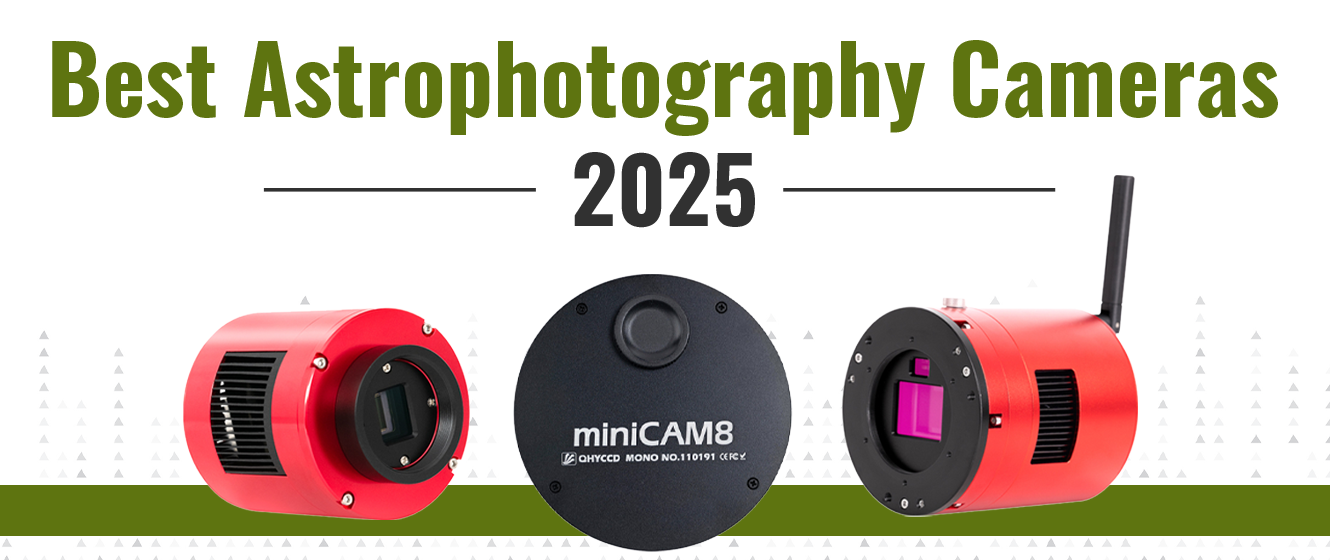
With a large number of dedicated astronomy cameras on the market, it can be a daunting task to find the right model that best fits your specific needs. Sensor size, resolution, full well depth, TEC cooling, read noise, etc… it’s easy to get lost within the technical jargon that comes with camera shopping. Here at High Point, we have done the hard work for you, putting together this comprehensive list of the top astrophotography cameras of 2025! Our years of hands-on experience and customer feedback has helped us narrow down the best of the best when it comes to astroimaging cameras, helping you choose a perfect camera for your specific setup.
Before we delve into the list, here are a few notes to consider: For our selection, each camera is cooled and comes ready to use out of the box. Additionally, each camera is compatible with the latest software and mount hardware on the market and is supported by the manufacturer. Lastly, we have included an “at a glance” table, a list of key advantages, and things to consider for each model, helping you easily compare these cameras. Now, let’s take a look at the entries for the best cameras of 2025!
Navigation Menu
ZWO ASI2600 Air Wireless Smart Camera and Guider
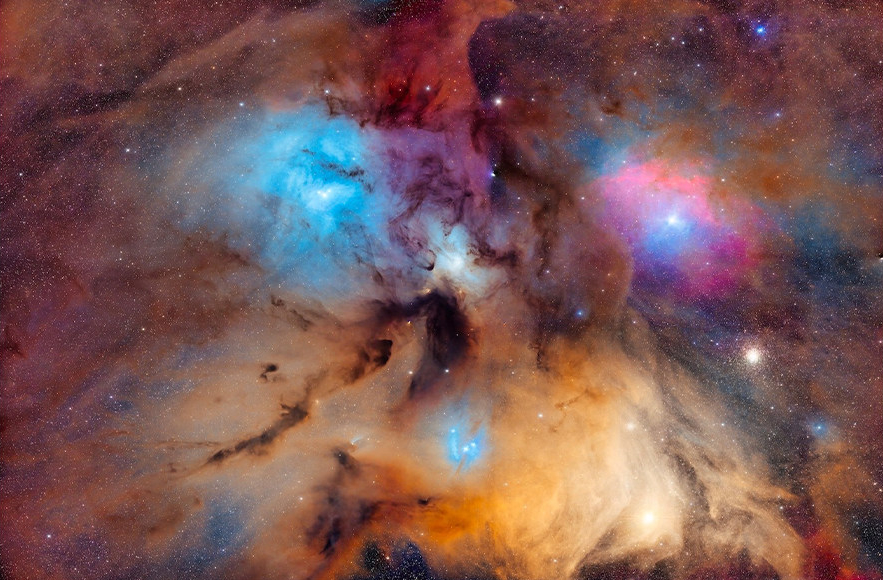
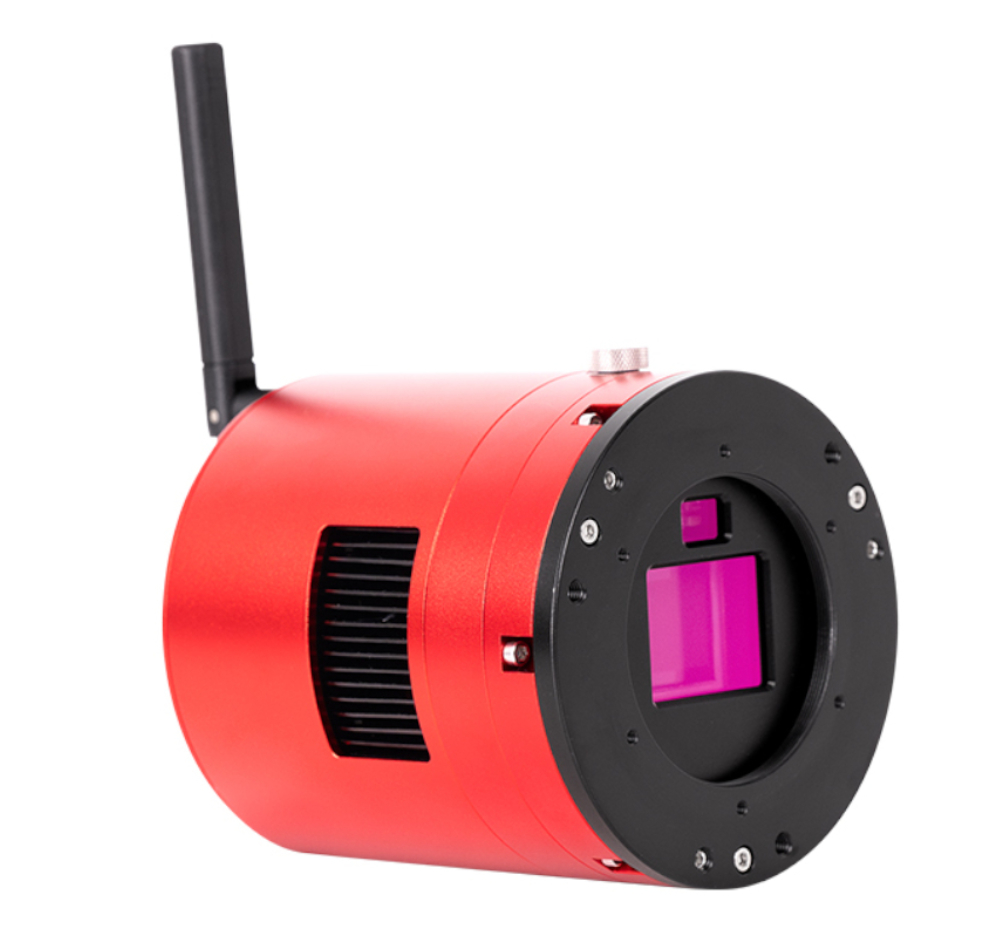
"Great All-In-One Solution!"


"The 2600MC Air reduces setup time and simplifies my gear by eliminating the need for some cables... I prefer to keep things as simple as possible while imaging and the 2600MC Pro certainly delivers."
ZWO ASI2600MM-Air Wireless Smart Camera and Guider -
ZWO ASI2600MC-Air Wireless Smart Camera and Guider -
| Sensors | Sensor Size | Resolution | Pixel Size | Peak QE | Full Well | Main: Sony IMX571 Guide: SS2210 |
APS-C 23.5x15.7mm |
6248x4176 26 MP |
3.76um | Mono: 91% Color: 80% |
50Ke |
|---|
As an industry leader in highly innovative astroimaging technology, ZWO blends their latest creations, the ASI2600 Duo and the ASIAir to deliver this one-of-a-kind ZWO ASI2600 Air Wireless Smart Camera and Guider! Housing a powerful imaging sensor, a dedicated guide sensor, and an ASIAir control system all in one package, capturing the night sky has never been easier. Collect beautiful data with the outstanding Sony IMX571 sensor, providing 26 megapixels of resolution, large dynamic range, and low read-out noise. The built-in guide sensor lets you say goodbye to external guide cameras, guide scopes, and OAGs with this simple, effective solution, while the integrated wireless control system offers the full ZWO ASIAir experience. For those looking to simplify their astroimaging rig, we highly recommend checking out this ZWO ASI2600 Air!
Advantages:
✓ Top choice for our team and customers
✓ Integrated guide sensor
✓ Integrated ASIAir
✓ Wireless operation
✓ Available in monochrome or OSC
✓ Large APS-C sensor
To Consider:
✗ Optics must support a 44 mm image circle for proper illumination of guide sensor
ZWO ASI585 Air Wireless Smart Camera and Guider
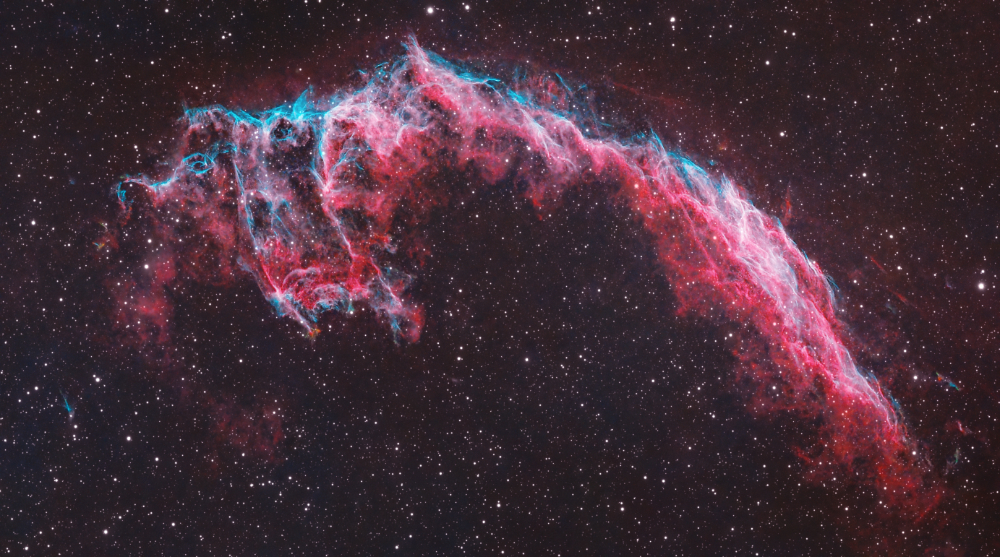 Veil Nebula captured with the ZWO ASI585MC-Air. Photo by Gear Expert Kurt Kimbrell.
Veil Nebula captured with the ZWO ASI585MC-Air. Photo by Gear Expert Kurt Kimbrell.
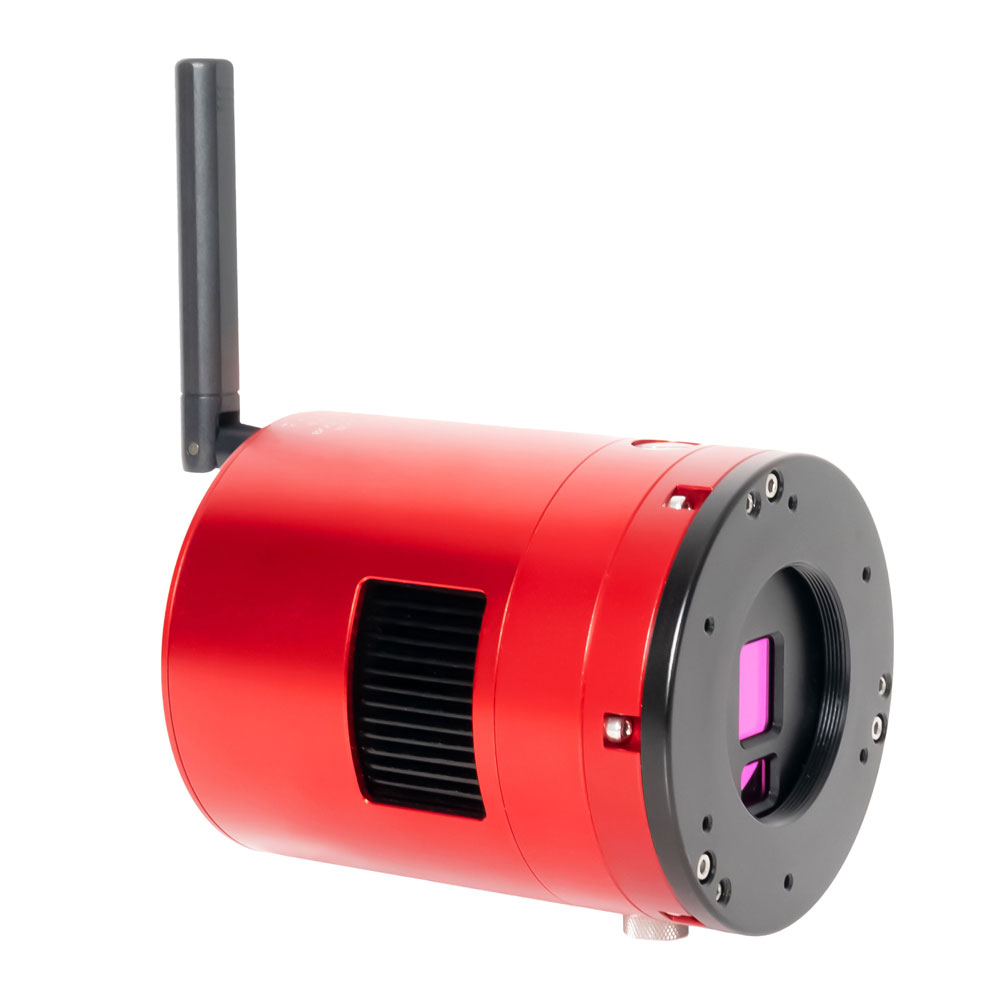
"Works Perfectly"


"This camera works perfectly... Its super easy to use, and the images are incredible, however keep in mind that because the sensor is small, images with it are very zoomed in, especially with an SCT telescope."
ZWO ASI585MC-Air Wireless Smart Camera and Guider -
| Sensor | Sensor Size | Resolution | Pixel Size | Peak QE | Full Well | Main: Sony IMX585 Guide: SC2210 |
1/1.2" 11.2x6.3mm |
3840x2160 8.29 MP |
2.9um | 91% | 40Ke |
|---|
Bringing the magic of the ZWO Air series into a smaller sensor format, the ZWO ASI585MC-Air Wireless Smart Camera and Guider is perfect for those looking for an all-inclusive solution to fill their smaller image circles. This downsized innovation combines the ASIAir system, IMX585 sensor, and an integrated guide camera in a package requiring an image circle of just 36 mm. With three devices built into one, you’re able to consolidate your connections with just a single power cable and the built-in 256GB of storage. The in-house WiFi and Bluetooth enable wireless control via the ASIAir app, further streamlining your setup! The popular IMX585 color image sensor brings excellent 40Ke full-well depth, impressive 91% Peak QE, low 0.7-6.67e read noise, and 12 bit dynamic range packed into a small 1/1.2" sensor size, helping you produce some truly incredible images!
Advantages:
✓ Integrated guide sensor
✓ Integrated ASIAir
✓ Wireless operation
✓ High peak QE value for impressive SNR values
✓ Small sensor ideal for planetary and deep space imaging
To Consider:
✗ Optics must support a 36 mm image circle for proper illumination of guide sensor
QHY miniCAM8
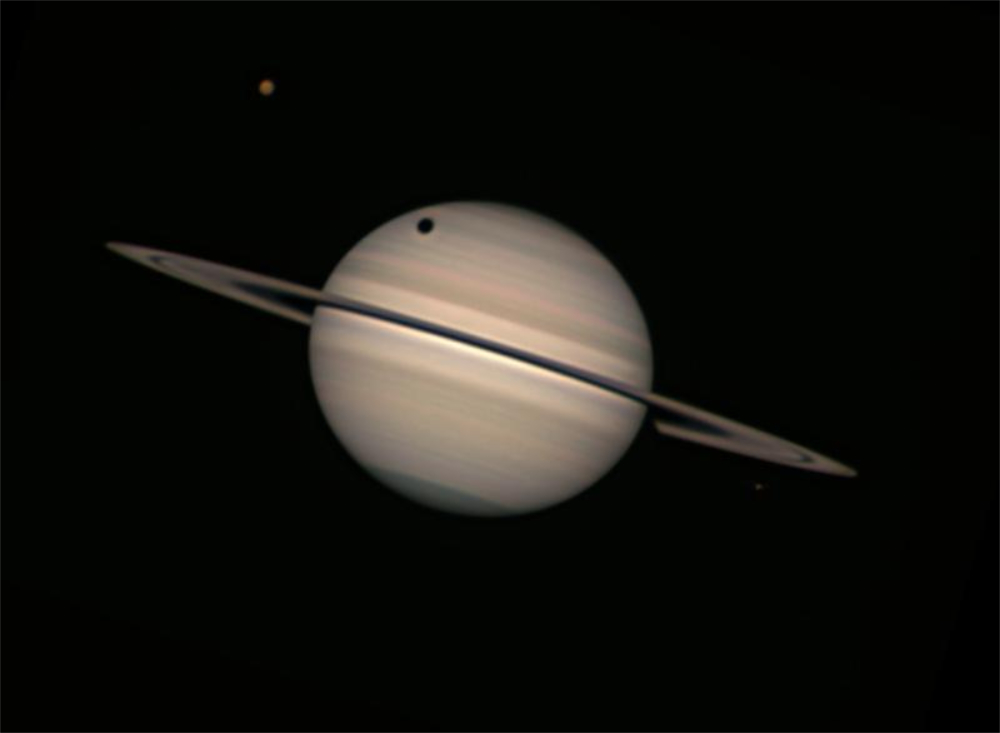
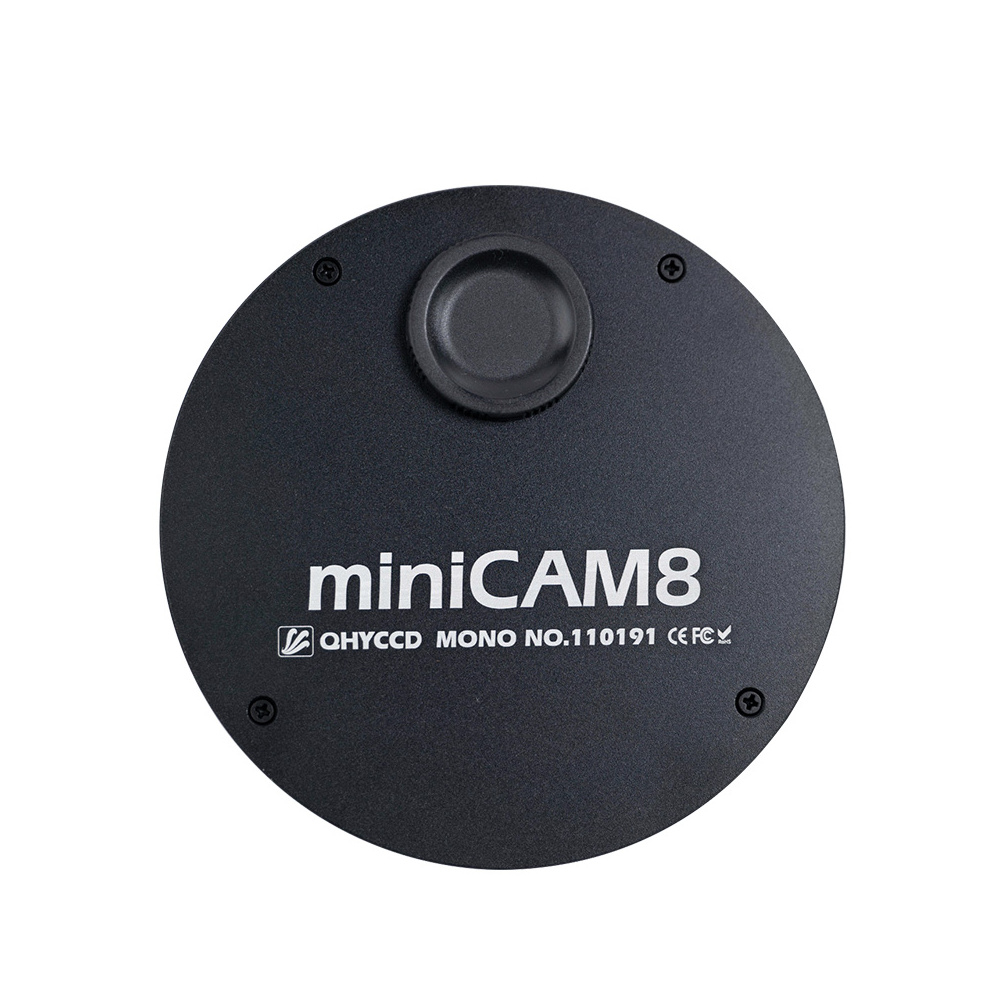
"I am super pleased"


"I am super pleased with the QHY miniCAM8-M. This kit came with everything I needed to upgrade my flagship astrophotography rig to monochrome capture, with its integrated 8-position filter wheel and set of 7 filters for deep sky imaging; (L,R,G,B + 7nm S,H,O)"
QHY miniCAM8 Monochrome Camera -
| Sensor | Sensor Size | Resolution | Pixel Size | Peak QE | Full Well |
|---|---|---|---|---|---|
| Sony IMX585 | 1/1.2" 11.2x6.3mm |
3856x2180 8.4 MP |
2.9um | 92% | 54Ke |
Blending the convenience of an electronic filter wheel and the performance of a powerful imaging sensor, the QHY miniCAM8 is a pocket-sized powerhouse! A total of eight filters can be housed within the integrated filter wheel, an incredible feat for a system this small. The monochrome miniCAM8 package includes eight filters total: Red, Green, Blue, Luminance, a dark frame filter, and 7nm Ha, SII, and OIII filters. With everything you need for vivid images loaded into the box, you’re set up for success! The color miniCAM8 includes a total of five filters: two light pollution filters, an enhancement filter, and UV/IR and dark frame filters. These filters paired with the high performance Sony IMX585 sensor open the doors to outstanding images of the night sky with its high peak QE value, large full well capacity, and back illuminated sensor. Perfect for those looking to capture the night sky with ease, the QHY miniCAM8 is a must have!
Advantages:
✓ Built-in filter wheel
✓ Multiple filters included within the package
✓ Small, compact design
✓ Amp Glow control
✓ Budget-friendly option
To Consider:
✗ Can only accept 19 mm x 12 mm rectangular filters which may be difficult to upgrade in the future
ZWO ASI2600 Pro
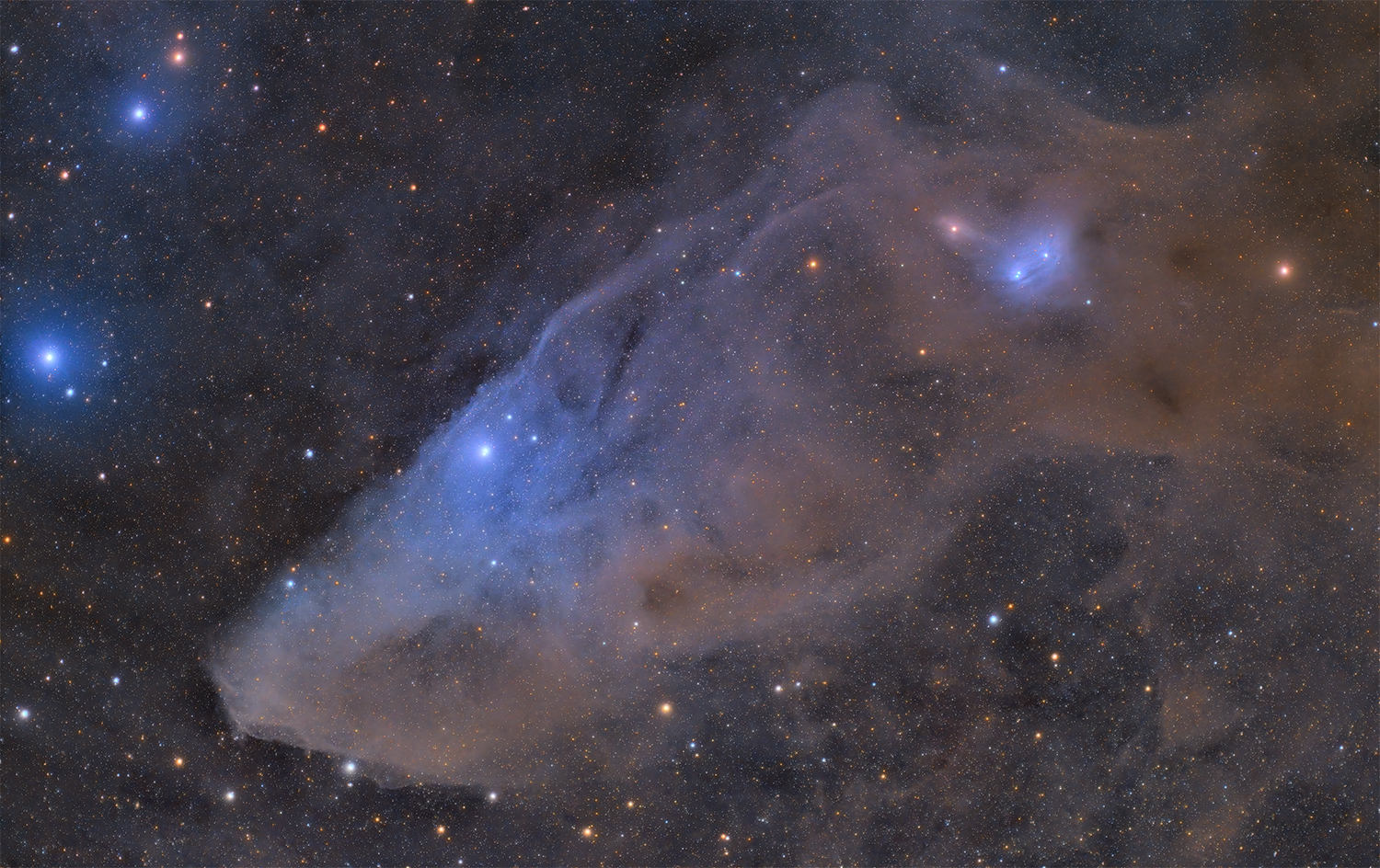 Horsehead nebula captured with the ZWO ASI2600MC Pro. Photo by Gear Expert Kurt Kimbrell.
Horsehead nebula captured with the ZWO ASI2600MC Pro. Photo by Gear Expert Kurt Kimbrell.
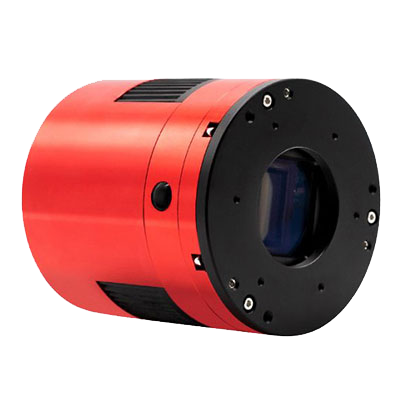
"Very nice camera!"


"Excellent QE and no detectable dark current noise. I have an ASI2600mc in addition, and this camera performs as well or slightly better in a side-by-side comparison. A good alternative to full frame chips. As usual HPS was easy to work with, and got it to me quickly."
ASI2600 Pro Monochrome Camera -
| Sensor | Sensor Size | Resolution | Pixel Size | Peak QE | Full Well |
|---|---|---|---|---|---|
| Sony IMX571 | APS-C 23.5x15.7mm |
6247x4176 26 MP |
3.76um | Mono: 91% Color: 80% |
73Ke |
Next on our list we have the impressive ZWO ASI2600 Pro. This APS-C powerhouse includes a whopping 26 megapixels for stunning detail on the night sky. At the heart of this camera is the Sony IMX571 sensor, offering impressive aspects such as an ultra-high dynamic range of 14 stops, a high peak quantum efficiency, and a remarkably low readout noise. In addition to high sensor performance, you can also expect key features like zero amp glow, an integrated anti-dew heater, an onboard memory cache, and a back-illuminated sensor for a heightened signal to noise ratio! Available in both monochrome and color, the ZWO ASI2600 Pro is a great choice for astroimagers seeking crisp, high resolution images on the cosmos!
Advantages:
✓ Large APS-C sensor available in monochrome and OSC
✓ ASI2600 Duo with integrated guide camera
✓ 26-megapixel powerhouse
✓ Backlit sensor
✓ Zero Amp Glow control
✓ Integrated dew heater for humidity control
To Consider:
✗ Not as budget friendly—think mid-priced, but high-performance
ZWO ASI533 Pro
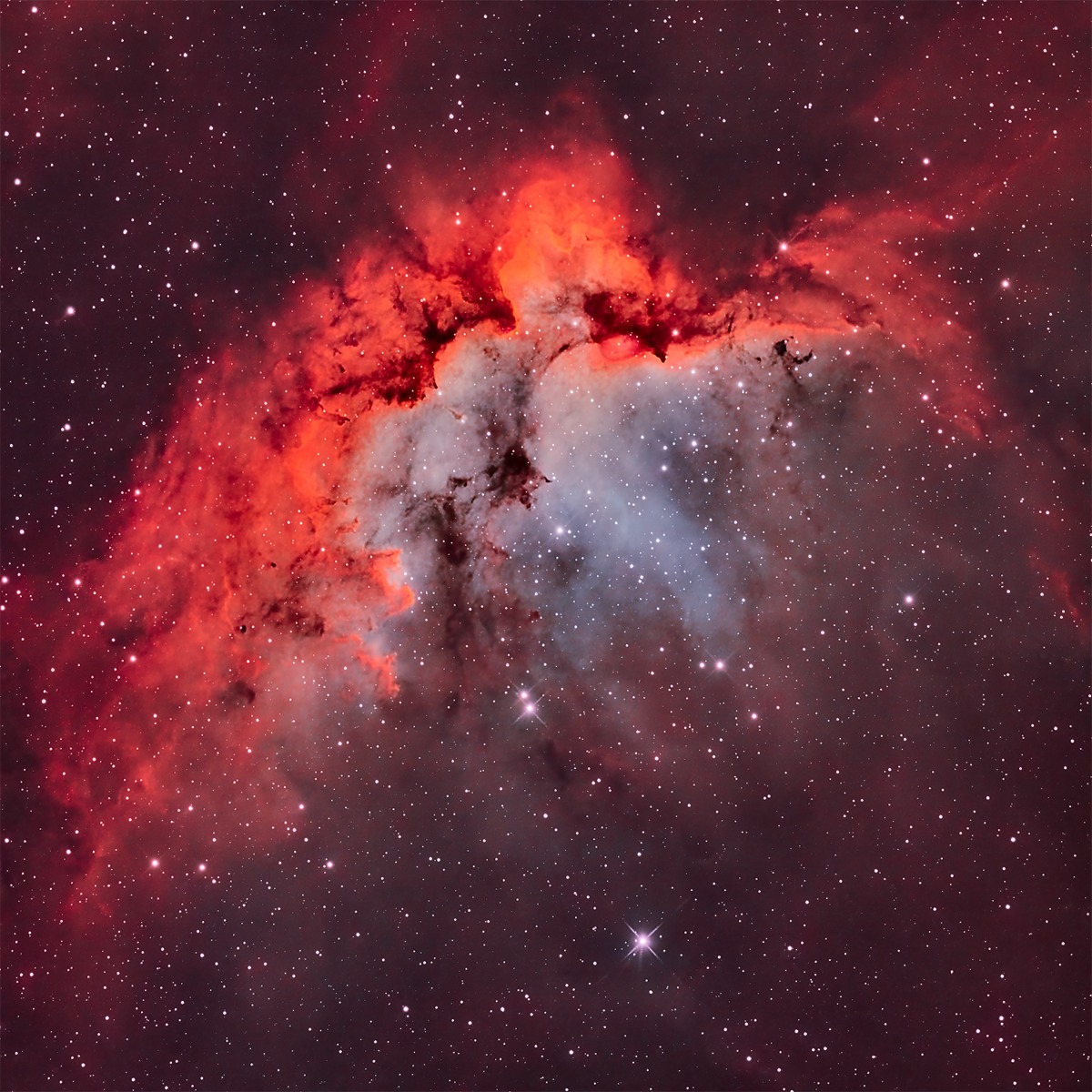 Wizard nebula captured with the ZWO ASI533MM Pro. Photo by Gear Expert Kurt Kimbrell.
Wizard nebula captured with the ZWO ASI533MM Pro. Photo by Gear Expert Kurt Kimbrell.
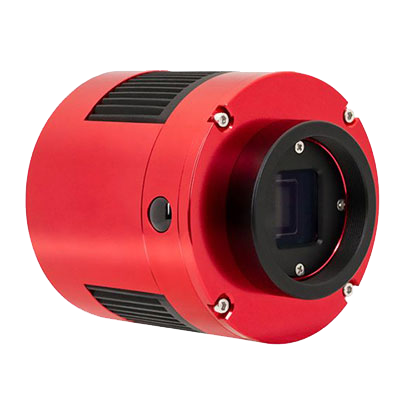
"Incredible Deep Sky Camera"


"...I’m very pleased with the camera and will likely be continuing to use it for years to come. Each frame has so little noise compared to my old camera and the objects are crystal clear in even a single sub exposure."
ASI533 Pro Monochrome Camera -
| Sensor | Sensor Size | Resolution | Pixel Size | Peak QE | Full Well |
|---|---|---|---|---|---|
| Sony IMX533 | 1" 11.3x11.3mm" |
3008x3008 9 MP |
3.76um | Mono: 91% Color: 80% |
50Ke |
Our next pick is the handy ZWO ASI533! This versatile camera is a wonderful choice for those looking for a high quality, yet inexpensive addition to their astroimaging toolkit. The versatile 1” square sensor provides compatibility with just about any setup, offering use with a host of telescopes, filters, filter wheels, and OAGs. If you have a small refractor or an imaging Newtonian like the Apertura Carbon Star 150, the 1” sensor is a perfect fit. This small sensor size also means 1.25” filters can be used, helping you save money on these smaller models! With features similar to that of the ZWO ASI2600, you can expect crisp, clean frames thanks to the absence of amp glow, smooth data transfer with the integrated memory buffer, and exceptional data collection with the back-illuminated sensor design. The ZWO ASI533 includes all the sought-after features of the larger cameras on this list though at a budget-friendly price point!
Advantages:
✓ Top choice for our team and customers
✓ 1” square sensor available in monochrome or OSC
✓ Backlit sensor
✓ Amp Glow control
✓ Budget-friendly option
✓ Great paired with small refractors for deep-space imaging
To Consider:
✗ Framing a 1” square aspect ratio is out of the norm for “cameras” and can take some getting used to
ZWO ASI6200 Pro
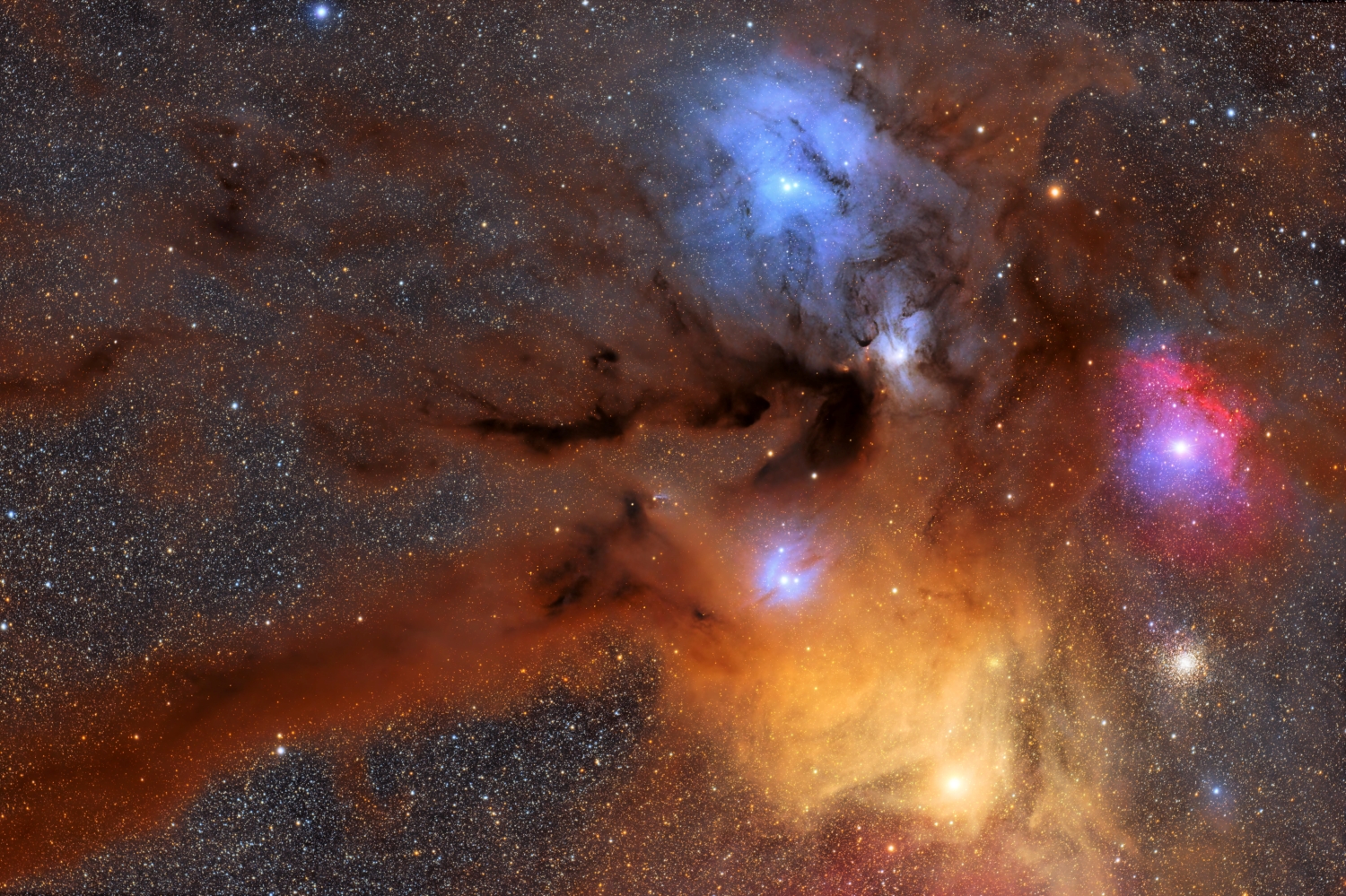 RHO captured with the ZWO ASI6200MC Pro. Photo by Gear Expert Teagan DePrato-Grable.
RHO captured with the ZWO ASI6200MC Pro. Photo by Gear Expert Teagan DePrato-Grable.
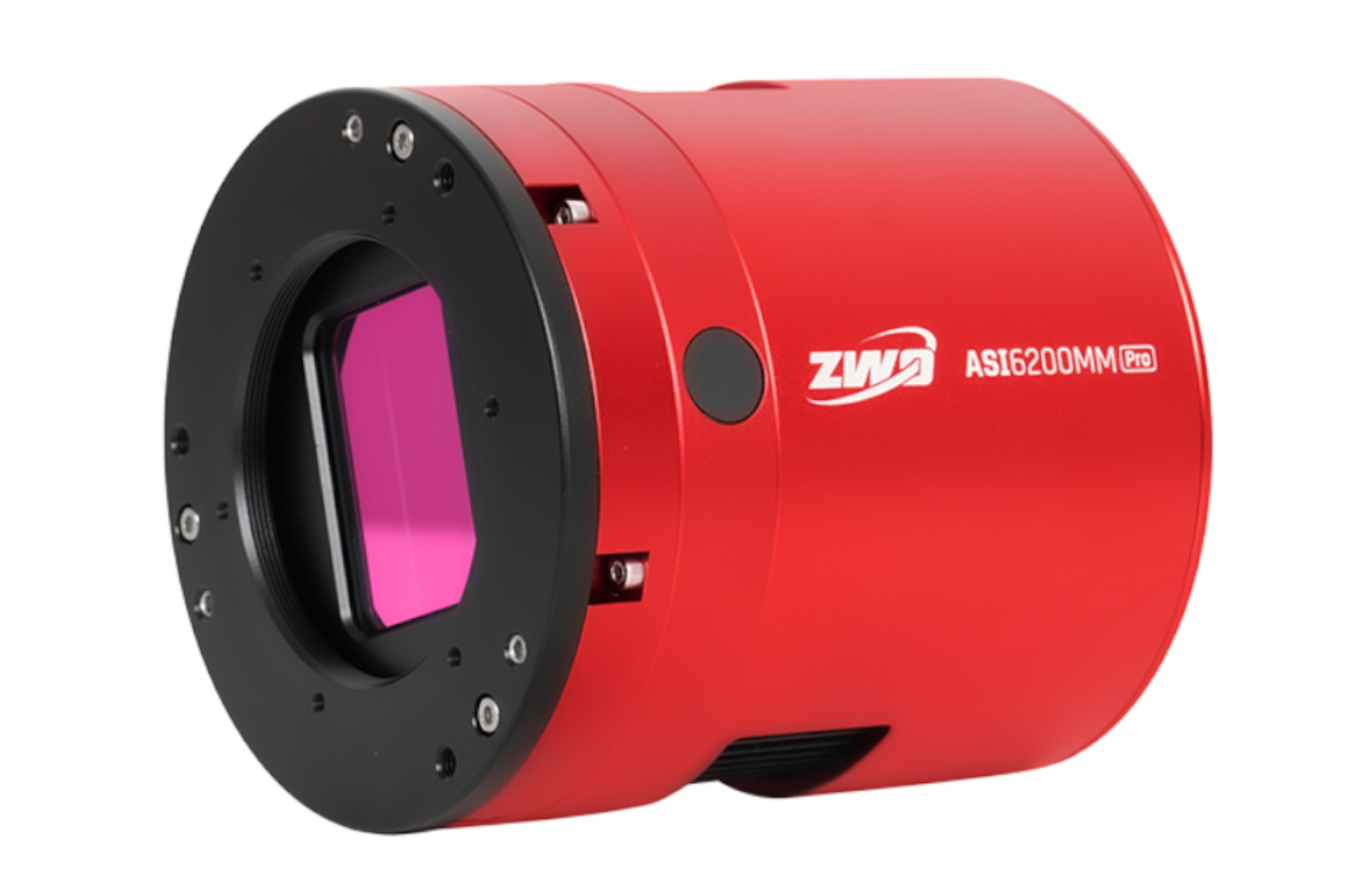
"A resolution powerhouse!"


"The 61.2mp full frame sensor not only looks pristine in overall image quality but gives you the freedom to crop in on your favorite areas you wish to showcase. The frame sizes are rather large so make sure you got plenty of hard drive space and be ready to see some pro grade images!"
ASI6200 Pro Monochrome Camera -
| Sensor | Sensor Size | Resolution | Pixel Size | Peak QE | Full Well |
|---|---|---|---|---|---|
| Sony IMX455 | Full Frame 36x24mm |
9576x6388 61.2 MP |
3.76um | Mono: 91% Color: 80% |
51.4Ke |
For our full-frame pick, we have the widely loved ZWO ASI6200! This high performance camera packs a punch, offering a substantial 61.2 megapixels of resolution. Optimal for those looking to capture more of the sky in a single shot, render high resolution images of large star clusters, galaxies, and vast nebulous cloud complexes. A total of 14 stops of dynamic range allow for beautifully saturated color gradients, while the incredibly low read noise and high peak QE offer high SNR values. To help you preserve dynamic range and keep noise to a minimum during high gain imaging, a built-in High Gain Conversion mode keeps your images pristine and sharp. Like the other entries on this list, the Sony IMX455 sensor is back-illuminated for peak signal collection. With qualities like these, you can expect nothing short of incredible detail, sharp contrast range, and crisp, detailed images!
Advantages:
✓ Monochrome and One-Shot-Color (OSC) options, both with a large full frame sensor
✓ Backlit sensor
✓ Zero Amp Glow control
✓ Integrated dew heater for humidity control
To Consider:
✗ Not always a budget-friendly option
ZWO ASI585 Pro
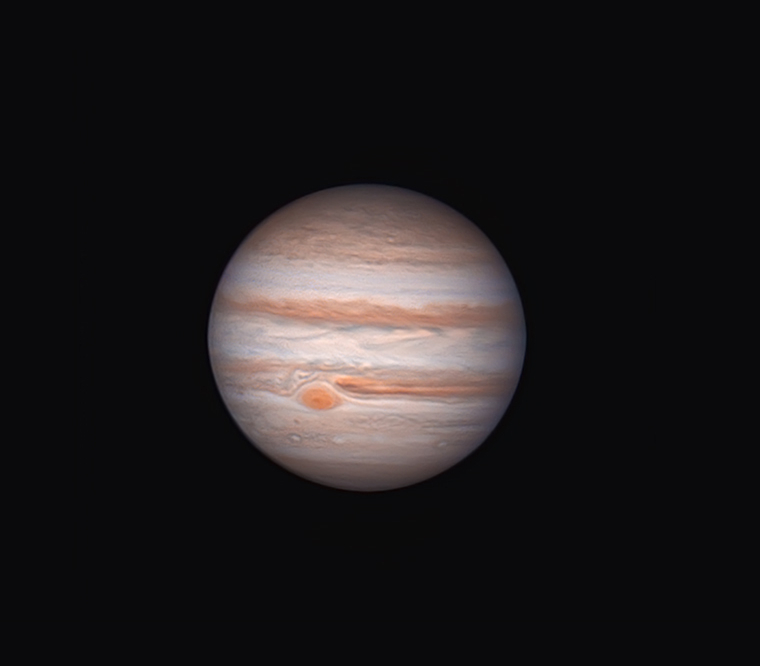 Jupiter captured with the ZWO ASI585 Pro by Jim Rivera
Jupiter captured with the ZWO ASI585 Pro by Jim Rivera
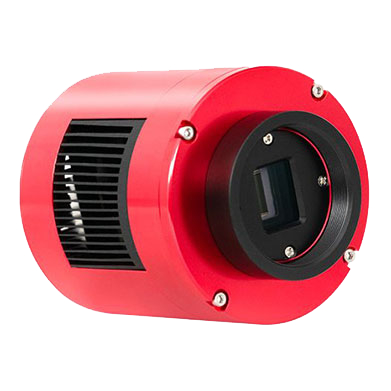
"Great camera"


"This is my 1st dedicated cooled astrophotography camera. It was so much easier to use than my DSLR and the images were spectacular... Highly recommend!"
| Sensor | Sensor Size | Resolution | Pixel Size | Peak QE | Full Well |
|---|---|---|---|---|---|
| Sony IMX585 | 1/1.2" 11.2x6.3mm |
3840x2160 8.29 MP |
2.9um | 91% | 40Ke |
Crafted to deliver high sensitivity in a small package, the ZWO ASI585 Pro camera is the perfect choice for deep space and planetary imaging alike. The small, 1/1.2” sensor helps crop in your field of view, enabling you to fill the frame with the cloud bands on Jupiter, the rings on Saturn, and DSOs such as the Orion Nebula and the Whirlpool Galaxy! Fast frame rates, small pixels, and the ability to image with 4K resolution make the ZWO ASI585 a standout option for any astroimager. Like the other entries on this list, amp glow is of no concern, helping streamline your imaging routines. Additionally, the integrated memory buffer is highly useful for planetary imaging as it ensures smooth, reliable data transfer to your computer. Perfect for those looking for high performance on a budget, the ZWO ASI585 can help you reach new heights in your astroimaging journey!
Advantages:
✓ 1/1.2" sensor compatible with a wide range of gear
✓ Backlit sensor
✓ Large 40Ke full well capacity
✓ Low read noise of 0.7e
To Consider:
✗ With a small sensor, the field of view will be far narrower than the larger sensors on this list
Honorable Mention
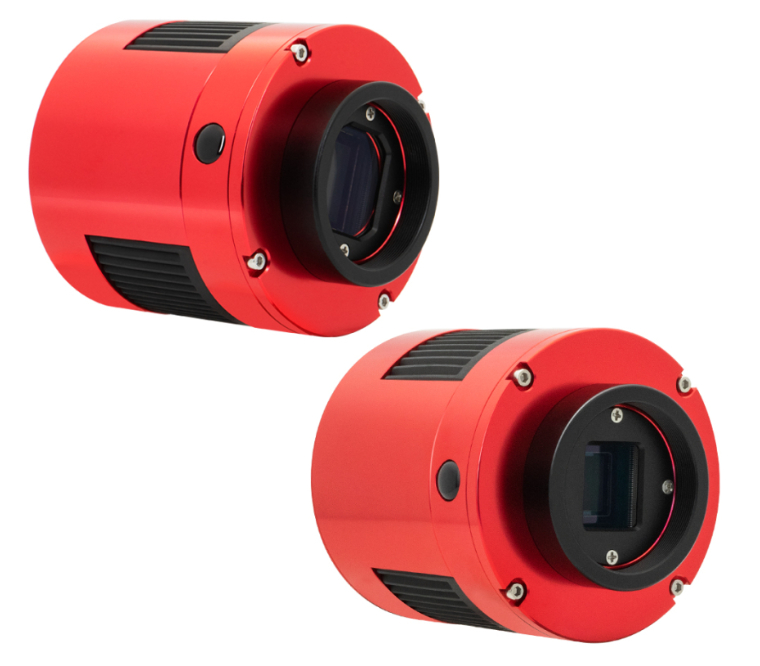
ASI294 Pro Camera - Starting at ASI183 Pro Camera - Starting at Making our picks for honorable mention are the ZWO ASI294 and ASI183. These tried and true cameras have been on the market for quite awhile, helping astrophotographers capture beautiful images of the night sky for years! While seemingly outdated for 2025 with their lack of amp glow control, these two ZWO cameras are still wonderful choices for those in search of high quality astroimages on a budget. Capturing dark frames easily mitigates the amp glow seen without your frames, helping you resolve stunning detail and structure on nebulae, galaxies, and more. These time-tested favorites have proven to be a reliable option for astrophotographers far and wide. Check them out by clicking the links above!
At High Point Scientific, we don’t just sell these products, we use and test them by incorporating them into our personal rigs. Our entire team understands that selecting the right dedicated astro-camera can be daunting, given the array of options available. A camera is not a minor investment, which is why we feel strongly about giving our customers a list of our sure-fire favorites! If this top five cooled astronomy camera list has piqued your interest but you still require additional guidance, we invite you to explore our comprehensive "Choosing a Deep Sky Camera" article. At High Point Scientific, our goal is to empower you and give you the knowledge and tools needed to make an informed decision that aligns perfectly with your astrophotography goals.
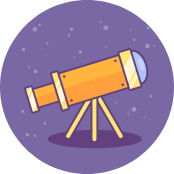
Learn More
Interested in learning more about telescope mounts and astrophotography? Not sure where to begin? Check out our Astronomy Hub!
Glossary
Amp Glow
Amp glow is a glow seen in images that is generated by the camera, often a result of the heat from readout circuitry.
Astronomy
Astronomy is the scientific study of space and the celestial objects within it. It also deals with the physical universe as a whole. Astronomy can be broken up into four subcategories: astrophysics, astrometry, astrogeology, and astrobiology. The study of astronomy has helped measure time, seasons, and navigation on Earth.
Astrophotography
This refers to photography of astronomical bodies and phenomena. Astrophotography is not new, for example the popular T threading still used today harkens from Tamron’s T-mount developed for their 35 mm cameras - however it has seen a notable increase in popularity with improvements in cameras, mounts, filters, and software making astrophotography much more accessible. This is not limited to celestial bodies such as nebulae, planets, or galaxies either, as solar imaging is now more within the reach of the average consumer than ever before.
Backlit / Back-Side Illuminated / Back-Illuminated (BSI)
A backlit or back-illuminated sensor is a type of digital camera sensor that places all of the wiring and circuitry for electronic signals behind the sensor. BSI sensors increase image quality in low-light conditions because the position of the wiring and circuitry prevents illumination loss.
Color Camera / One-Shot-Color Cameras (OSC)
Often referred to as One-Shot-Color (OSC) cameras, these cameras are able to produce an image in full color without the use of additional filters. This greatly simplifies the imaging process, and allows astrophotographers to complete a project in far less amount of time. They are especially useful for those who have limited clear nights, where they can go weeks to months without having an imaging opportunity due to their climate. These cameras are excellent choices to image the planets, the Sun, the Moon, and deep space.
Cooled Camera
A cooled camera utilizes cooling technology to decrease the temperature of the sensor below ambient temperature. This allows for a reduction in the thermal noise of the images.
Dedicated Astronomy Camera
These cameras don’t look like what one traditionally thinks of when imaging a camera; instead taking the form of cylinders or pucks, with no physical controls, displays, or viewfinders to speak of. These require a computer or WiFi control device to take images, with more advanced models additionally requiring external power. What they give in return for all of these concessions is granular control over the sensor settings, increased sensitivity to wavelengths that more traditional cameras filter out, options for deBayered sensors (true monochrome), designs that easily connect with astronomy equipment, and in some cases cooling for increased performance.
Deep Sky Camera
A deep sky camera is designed to capture images of celestial objects such as galaxies and nebulae. They tend to utilize larger sensors than planetary cameras, often making them larger in body size and weight, as well as more expensive
Dew Heater
Dew heaters are a low wattage dew prevention tool. It utilizes an electrical heater to warm up a lens to prevent the accumulation of moisture.
Electronically Assisted Astronomy (EAA)
Electronically Assisted Astronomy describes the process of attaching a digital camera to a telescope and viewing through a screen rather than a traditional eyepiece. Essentially, the camera replaces the eyepiece in the telescope set up.
Full Well Capacity/ Full Well Depth
This refers to the amount of signal that a pixel can store before it becomes fully saturated. This becomes important especially with longer exposure times, as if pixels become fully saturated then the contrast between them and surrounding detail will be lost as those details continue to brighten but the saturated pixels remain the same. It is important to understand that this is not a static figure, but rather one that much like other camera specifications changes depending on the gain setting.
Imaging Newtonian
An Imaging Newtonian is a Newtonian telescope that has been optimized for astrophotography equipment. Where a traditional Newtonian would have its point of focus just above the end of the draw tube (in order to best focus with eyepieces), an imaging Newtonian is designed to focus further back to provide adequate space for astrophotography cameras and accessories. A side-effect of this focal point shift is a decrease in field-illumination, which presents as vignetting in images. Accordingly, imaging Newtonians also have larger secondary mirrors than their traditionally designed counterparts, which evens out illumination. In addition to these optical changes, these scopes can (but don't always) have hardware that has been upgraded or replaced with components that make attaching supporting equipment easier. Some of these scopes can be used visually as well as for astrophotography, however the optical changes and astrophotography hardware focused design does not make them the best candidate for visual observation.
Monochrome Camera
Monochrome cameras deliver the most detail and sensitivity out of all other camera options. Color cameras have an arrangement of pixel filters in a 2x2 grid, typically consisting of two green, one red, and one blue, which is then repeated across the entire sensor in what is known as a Bayer pattern. Monochrome cameras however, have photosites that do not contain an alternating pattern of those red, green, and blue light pre-filters. Instead, their photosites collect all incoming light regardless of color – allowing for up to 3x the collection of signal (red, green, and blue light). Because the camera itself is not pre-filtering each color, in order to produce a full color image, they must be paired with filters to create a full color image. These filters can range from simple RGB filters to narrowband filters, and the collected data is then combined in a photo editing software. Though light is still passed through an external filter, every pixel well is utilized, resulting in 4x more red or blue signal and 2x more green signal compared to a color camera.
Peak QE
Camera sensors have differing sensitivities to different wavelengths, which are often described as a percentage of how much light of a certain wavelength is converted to actual signal. These are plotted on a graph, which often overlays the sensitivity of the green pixels, red pixels, and blue pixels for each wavelength. The peak quantum efficiency, or peak QE value, is the highest percentage measured across all of the pixels on the camera sensor.
Pixel
Digital images are made up of many, many, small boxes arranged in a grid, and these boxes are called pixels. To create these digital images, camera sensors are similarly made up of thousands or millions of small light measuring components arranged in a grid. These too are referred to as pixels.
Refractor
A refractor telescope is an optical instrument that utilizes refraction of light to create a visual image. This telescope type uses an objective lens to bend/refract light from far away objects to magnify them, as well as allowing them to appear brighter and clearer. Refractors were created in 1608, and their creation is attributed to Hans Lippershey, a Dutch lens maker.
Sensor
A camera sensor is the main component of a DSLR, deep sky camera, or smart telescope that turns incoming light into data that can then be displayed on digital devices like mobile phones or computers. Accordingly, these are just as important as the optics of a system for a quality image. There are a wide variety of specifications that are important for a sensor - physical size, pixel size, resolution, dynamic range, amounts of image “noise”, and other technologies such as back-side illumination. As a result there is also a wide variety of sensors available that attempt to balance these in differing ways for different applications and price points.
Sensor Size (Full Frame, APS-C, Micro 4/3, Etc)
Imaging sensors come in many different proportions, such as 4:3 or 1:1, and physical sizes. There are some common combinations that have received a name - full-frame, APS-C, micro four thirds (4/3). The most important component of sensor size for astrophotography is the measurement from corner to corner (diagonal) of the sensor, which can then be compared to a telescope/ corrective element's image circle to assess how well the two may pair.
Zero Amp Glow
Zero Amp Glow is a camera feature that prevents amp glow, any glow in an image caused by the camera. This control feature is managed using a combination of software and/or hardware that reduces the power consumption of the sensor and supporting circuitry.





